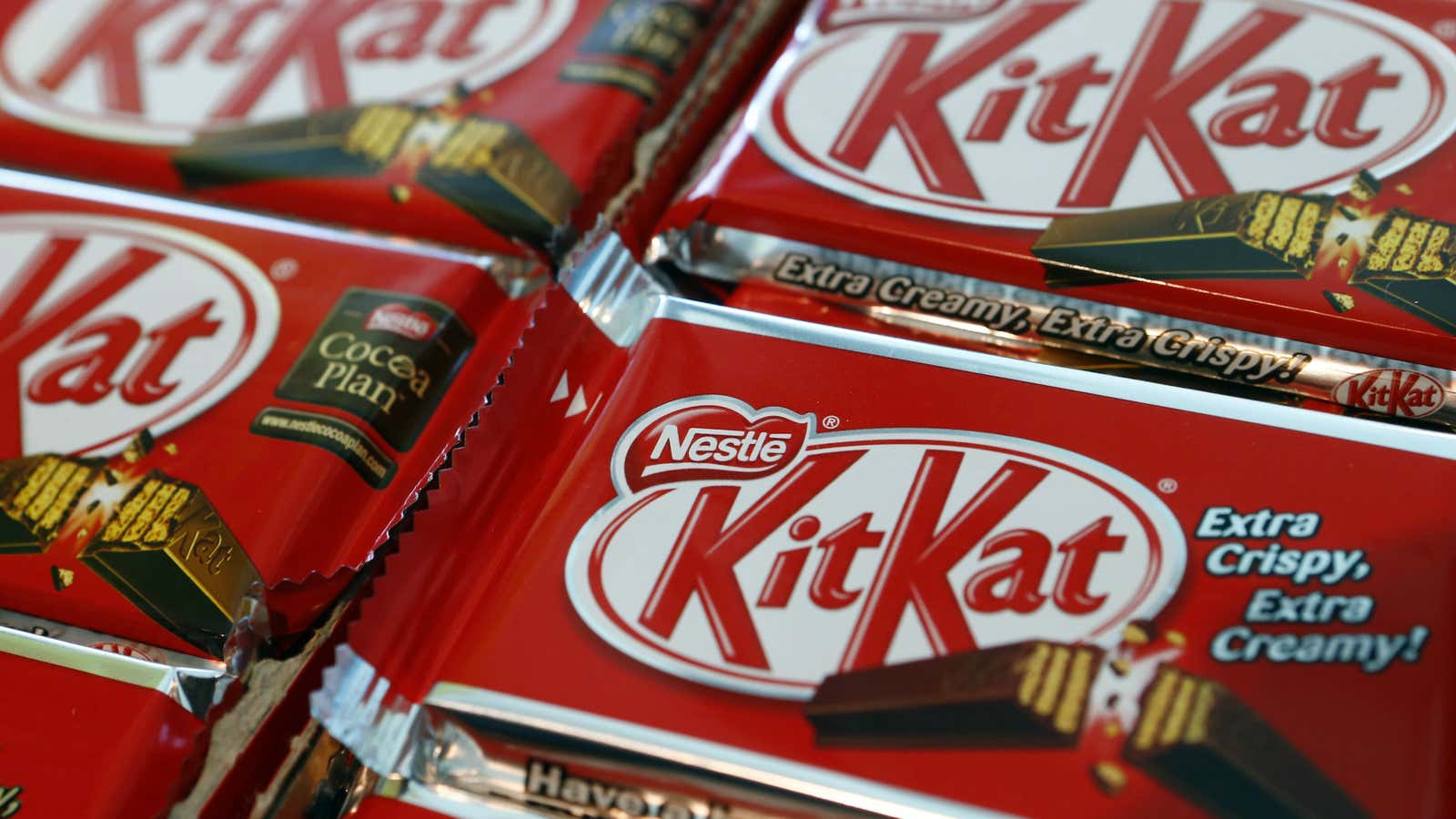Nestlé, the world’s largest food company by revenue, is taking steps to make sure that none of the chocolate in its iconic KitKat bars is made with child labor. By the first quarter of next year, all KitKat bars will be made with cocoa that has been accredited by third party agencies to assure that it has been sustainably sourced, the company said on Monday (Aug. 31).
The announcement comes a few days after a class action lawsuit accused the Swiss company of knowingly using fish from a Thai supplier that uses slave labor for its cat food Fancy Feast. “Forced labor has no place in our supply chain,” the company said in response. The company did not say whether other chocolate products would fall under the new rules. The new standard also applies to KitKat bars made in the US by its licensee Hershey. The company noted in an email to Quartz that all of the cocoa sourced in Australia, New Zealand, Canada, and Japan is certified by a nonprofit for sustainable farming, UTZ Certified.
The chocolate wafer is one of the most popular candies in the US and most recently has boosted Nestle’s earnings in Eastern Europe, Latin America and Japan. Nestlé says that as of 2012, 650 KitKat fingers were being consumed a second around the world.
For years, Nestlé and other companies in the $200 billion-a-year confectionery industry have been accused of sourcing cocoa from farms that use forced child labor. Last year, the Fair Labor Association (FLA) found four workers (pdf) under the age of 15 working on farms in the Côte d’Ivoire that supply Nestlé. Côte d’Ivoire supplies about 40% of the world’s cocoa, with much of it harvested by forced child laborers. Estimates of children working on cocoa farms in the country range between 30,000 and 800,000. Only about 20% of the cocoa Nestlé sources from the country can be traced, according to the FLA, which has partnered with the company to monitor its supply chain since 2012.
These cases are likely to continue. Critics say the impending Trans Pacific Partnership deal between the United States and Pacific countries includes a loophole, an 80-year old exemption in the US tariff code, which allows imports of goods into the US to be made by forced labor, when they can’t be manufactured in the US in enough quantities to meet “consumptive demands.”
